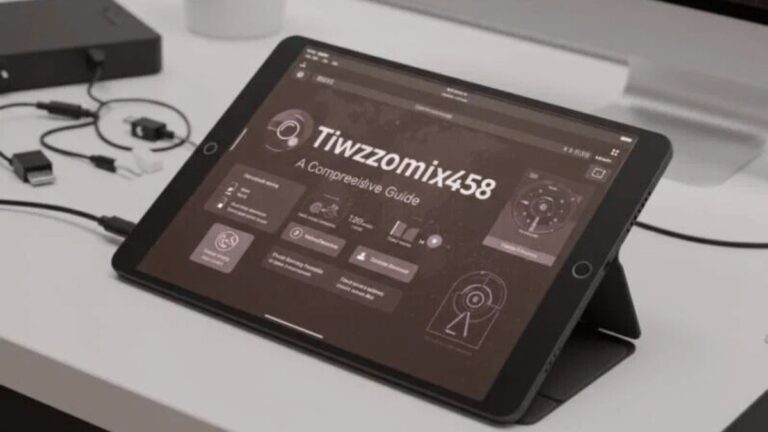
If you take pride in your vehicle, you already know that keeping it in top-notch condition goes far beyond a regular car wash. Automotive detailing is the key to retaining your car’s value, appearance, and performance. Whether you’re a car enthusiast or someone who just loves riding in a clean, well-maintained vehicle, mastering vehicle detailing can make all the difference.
At Detailchip.com, we aim to empower car owners by sharing expert automotive detailing tips, showcasing the best products, and offering practical advice that delivers results. This guide dives deep into automotive detailing, covering essential tips, tools, and techniques so you can achieve perfection every time.
What is Automotive Detailing?
Automotive detailing goes far beyond cleaning your car. It’s a meticulous process of cleaning, restoring, and protecting every corner of your vehicle—inside and out. Unlike traditional car washes, detailing includes deep-cleaning techniques aimed at removing dirt, grime, and imperfections while protecting finishes and surfaces with specialized products.
There are two primary categories of detailing:
- Exterior Detailing involves cleaning and restoring the outer surfaces, such as paint, glass, tires, and wheels.
- Interior Detailing focuses on the car’s interior cabins, including upholstery, dashboards, carpets, and vents.
Whether you’re preparing your car for a show or just love that showroom shine, mastering both aspects will help you maintain your vehicle’s brand-new look and feel.
Benefits of Automotive Detailing
Why should you prioritize detailing for your car? Here are several reasons:
- Preserve Value: Regular detailing helps maintain your car’s resale value by protecting it from wear and tear.
- Boost Appearance: A well-detailed car looks better than one that hasn’t been maintained. It turns heads on the road.
- Improve Longevity: Protecting your car’s surfaces—be it paint, upholstery, or dashboards—enhances their durability and prevents premature damage.
- Healthier Environment: Interior detailing improves air quality by removing allergens, dust, and bacteria.
- Enhanced Driving Experience: A clean, fresh-smelling, debris-free car simply feels better to drive.
With the right tools and techniques, these benefits are within your reach. If you’re unsure where to start, the following sections will provide you with actionable steps.
Tips for Exterior Detailing
A gleaming exterior is the hallmark of a well-detailed car. Follow these steps to bring out your car’s best shine:
1. Choose the Right Cleaning Products
Ensure you’re using products specifically designed for automotive use. Avoid household cleaners that may damage your vehicle’s finish. Look for:
- Car cleaning soap that protects paint while removing grime.
- Specialized car polish to bring out the luster.
- A trusted wax or sealant to protect the paint.
2. Start with a Two-Bucket Wash Method
The key to avoiding swirl marks lies in using the two-bucket method:
- Use one bucket for clean, soapy water.
- Use another bucket for rinsing out your sponge or mitt after each pass.
This method ensures you’re not reapplying dirt or grime to your car’s surface.
3. Don’t Skip Decontamination
Even after a thorough wash, small contaminants may remain embedded in the paint. Use a clay bar to remove these impurities, leaving the surface smooth and ready for polishing.
4. Focus on Tires and Wheels
Your wheels take the most abuse from grime, brake dust, and road debris. Use a dedicated wheel cleaner and brushes to scrub them thoroughly. Consider applying tire dressing for that professional, glossy finish.
5. Protect with Wax or Sealant
Finish your exterior detailing with a high-quality wax or sealant to preserve the paintwork. Modern synthetic sealants are particularly effective and last longer than traditional carnauba waxes.
Tips for Interior Detailing
The interior of your car is where you spend most of your time, so keeping it spotless and fresh is essential. Here’s how:
1. Vacuum Thoroughly
Start by vacuuming every surface—carpets, seats, and crevices. Use specialized attachments to reach under seats and into air vents.
2. Use the Right Cleaner for Upholstery
Depending on your car’s interior, choose the appropriate cleaner:
- Fabric Seats: Use fabric-safe cleaners that lift dirt without oversaturating.
- Leather Seats: Opt for leather conditioners to clean and protect.
- Vinyl or Plastic Surfaces: Use cleaners designed to restore shine and reduce fading.
3. Pay Attention to Air Vents
Air vents can accumulate dust and allergens. Use a small detailing brush or compressed air to clean these hard-to-reach areas.
4. Deodorize the Cabin
Finish your work by applying an odor-neutralizing spray for a fresh, clean scent that lasts.
Essential Automotive Detailing Tools
Having the right tools can make all the difference in achieving professional results. Here’s a list of essentials:
- Microfiber Towels: These are perfect for drying and polishing without leaving streaks or lint.
- Detailing Brushes: Ideal for cleaning nooks and crannies like vents, buttons, and seams.
- Vacuum Cleaner: A vacuum with multiple attachments ensures thorough interior cleaning.
- Polishing Pads: For applying polish and wax evenly.
- Foam Cannon or Pressure Washer (optional): Provides a deep, consistent clean for your car’s exterior.
Recommended Products for Flawless Detailing
At Detailchip.com, we’ve tested countless products and recommend only the best for your car. Some of our favorites include:
- Meguiar’s Ultimate Wash & Wax for a deep clean and protective shine.
- Chemical Guys Clay Bar Kit for removing embedded contaminants.
- Adam’s Wheel Cleaner to keep your tires looking new.
- Lexol Leather Conditioner for soft, supple leather seats.
- Autoglym Vinyl and Rubber Care for interior trims and dashboards.
Check out more product recommendations on our website for every detailing need.
Automotive Detailing Mistakes to Avoid
Even seasoned detailers make mistakes. Avoid these common ones:
- Skipping Regular Maintenance: Waiting too long between detail sessions makes the job harder and less effective.
- Using Dish Soap on Paint: Dish soap is harsh and strips protective wax layers.
- Skipping Waxing: Wax protects the paint and enhances shine—don’t skip this step!
- Overusing Water: Use clean water sparingly to prevent water spots.
- Neglecting the Undercarriage: Salt, dirt, and grime can build up underneath over time, causing rust if not addressed.
Transform Your Vehicle Today with Expert Tips
Automotive detailing is both an art and a science. When done right, it can transform your car and extend its lifespan. Whether you’re a car show enthusiast or simply someone who loves driving a clean, well-maintained vehicle, investing in the right techniques and products is key.
At Detailchip.com, we’re here to guide you every step of the way. Visit our website for more detailed guides, product reviews, and expert advice to elevate your vehicle’s care routine.
Final Thoughts
Caring for your vehicle is an investment in both its appearance and longevity. By avoiding common mistakes and applying proven detailing techniques, you can ensure your car stays in top condition for years to come. Remember, attention to detail makes all the difference. Whether you’re tackling the work yourself or seeking professional help, take the time to research quality products and trusted methods. At the end of the day, a well-maintained vehicle doesn’t just look good—it retains value and delivers a more enjoyable driving experience.
Conclusions
Maintaining your vehicle is more than just a chore—it’s a commitment to preserving its value, functionality, and aesthetic appeal. By adhering to proper care routines and equipping yourself with the right tools and knowledge, you can avoid costly repairs and enhance your driving satisfaction. Regular maintenance not only reflects your pride of ownership but also ensures your car operates smoothly and looks its best. Achieving these results requires consistency, attention to detail, and a willingness to invest in quality care. Ultimately, the effort you put into vehicle maintenance today will pay off in reliability and performance for years to come.
FAQs
Q: How often should I service my vehicle?
A: It’s recommended to follow the manufacturer’s maintenance schedule listed in your owner’s manual. Typically, routine servicing should occur every 5,000 to 7,500 miles or every six months, depending on driving habits and conditions.
Q: What are the most important vehicle maintenance tasks?
A: Key maintenance tasks include regular oil changes, checking tire pressure and tread, replacing air filters, inspecting brakes, and ensuring fluid levels (such as coolant, transmission, and brake fluid) are adequate.
Q: How can I tell if my vehicle needs professional attention?
A: Warning signs include unusual noises or vibrations, dashboard warning lights, reduced fuel efficiency, or difficulty starting. Addressing these issues promptly can prevent more significant problems.
Q: Are synthetic oils better for my car?
A: Synthetic oils often offer better performance, particularly in extreme temperatures, and may extend the time between oil changes. However, always consult your owner’s manual for the recommended oil type for your vehicle.
Q: What should I do to prepare my car for seasonal changes?
A: Before winter, check the battery, tire tread, and antifreeze levels, and consider switching to winter tires. For summer, inspect the air conditioning system, coolant levels, and tire pressure to ensure smooth operation during warmer conditions.
Q: Can I perform maintenance tasks myself?
A: Many basic tasks, such as topping off fluids, changing wiper blades, or replacing air filters, can be done at home with the right tools and instructions. However, complex repairs or inspections should be handled by a certified mechanic.





